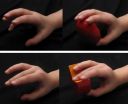(Press-News.org) April 9, 2015 - A new University of Utah study is the first to provide clear insight into contributors to suicide risk among military personnel and veterans who have deployed.
The study, published today in the journal Suicide and Life-Threatening Behavior, found that exposure to killing and death while deployed is connected to suicide risk. Previous studies that looked solely at the relationship between deployment and suicide risk without assessing for exposure to killing and death have shown inconsistent results.
"Many people assume that deployment equals exposure to specific forms of combat trauma, but the two are not equivalent," said Craig Bryan, psychology professor, director of the National Center for Veterans Studies at the U and lead author of the paper. "By looking specifically at exposure to death while deployed, it became clear that deployment itself does not increase risk for suicide because not all who are deployed are exposed to death and atrocity."
Part of the confusion from previous studies can be attributed to the variability in participant group sizes, where small differences in outcomes could appear very different. The U paper analyzed data from 22 studies, totaling 2.7 million participants from multiple eras and across nations, making it the most comprehensive evaluation to be conducted.
By reviewing these studies in aggregate, the researchers found much more consistency across data than the individual findings suggested.
Suicide rates have risen among military personnel during the past decade, and it is now the second-leading cause of death. The study found a 43 percent increased suicide risk when people were exposed to killing and atrocity compared to just 25 percent when looking at deployment in general.
"Next, we want to understand why exposure to killing and death leads to an increased suicide risk so we can develop better ways to support military personnel and veterans," Bryan said.
The research team's preliminary results suggest that seeing death and killing contributes to feelings of guilt, shame, regret and negative self-perceptions. Other research Bryan has conducted indicates that self-forgiveness protects against suicide attempts, and he plans to pursue this topic further so veterans and military personnel will have better support in dealing with trauma and transitioning to civilian life.
Why this study?
This study was very personal for Bryan, whose interest with the topic was solidified two years ago when former Army psychologist Peter Linnerooth died by suicide.
"His death had a profound effect on the military psychology community because we lost one of our own to this tragedy," Bryan said.
When he was deployed to Iraq in 2009 as an Air Force psychologist, Bryan was convinced the deployments contributed to suicide risk, but his research didn't confirm this theory.
Following the loss of Linnerooth, Bryan had a conversation with a fellow Army psychologist who told him that although he respected Bryan's research, he would never believe that Linnerooth's death wasn't connected to the things he saw while deployed to Iraq. That was when Linnerooth's life took a turn for the worse.
"That conversation haunted me for two years," Bryan said. "Then I realized that for more than a decade, researchers, including myself, have been asking the wrong question."
As he gathered all the studies he could find on the topic, the pattern began to emerge, and he realized that the mistake had been the assumption that deployment equaled exposure to killing and death.
"In many ways, this paper was driven by the motivation to provide greater clarity to Peter's family and friends, as well as to the military psychology community as a whole," Bryan said.
INFORMATION:
When black holes tango, one massive partner spins head over heels (or in this case heels over head) until the merger is complete, said researchers at Rochester Institute of Technology in a paper published in Physical Review Letters.
This spin dynamic may affect the growth of black holes surrounded by accretion disks and alter galactic and supermassive binary black holes, leading to observational effects, according to RIT scientists Carlos Lousto and James Healy.
The authors of the study will present their findings at the American Physical Society meeting in Baltimore ...
The RapidScat instrument that flies aboard the International Space Station (ISS) provided data about Tropical Cyclone Joalane's surface winds that showed how the strongest sustained winds consolidated as the tropical cyclone intensified and developed an eye. As of April 9, warnings were in effect at Rodrigues Island in the Southern Indian Ocean as Joalane approached.
RapidScat measured the surface winds within Tropical Cyclone Joalane late on April 7 and on April 8, revealing that the strongest winds consolidated over a 24 hour period. RapidScat measured Joalane's winds ...
Outbreaks of leukemia that have devastated some populations of soft-shell clams along the east coast of North America for decades can be explained by the spread of cancerous tumor cells from one clam to another. Researchers call the discovery, reported in the Cell Press journal Cell on April 9, 2015, "beyond surprising."
"The evidence indicates that the tumor cells themselves are contagious--that the cells can spread from one animal to another in the ocean," said Stephen Goff of the Howard Hughes Medical Institute and Columbia University. "We know this must be true because ...
Autism spectrum disorder (ASD) can produce strikingly different clinical outcomes in young children, with some having strong conversation abilities and others not talking at all. A study published by Cell Press April 9th in Neuron reveals the reason: At the very first signs of possible autism in infants and toddlers, neural activity in language-sensitive brain regions is already similar to normal in those ASD toddlers who eventually go on to develop good language ability but nearly absent in those who later have a poor language outcome.
"Why some toddlers with ASD get ...
Using induced pluripotent stem cells (iPSCs), a team led by Mount Sinai researchers has gained new insight into genetic changes that may turn a well known anti-cancer signaling gene into a driver of risk for bone cancers, where the survival rate has not improved in 40 years despite treatment advances.
The study results, published today in the journal Cell, revolve around iPSCs, which since their 2006 discovery have enabled researchers to coax mature (fully differentiated) bodily cells (e.g. skin cells) to become like embryonic stem cells. Such cells are pluripotent, able ...
LA JOLLA--If you had 10 chances to roll a die, would you rather be guaranteed to receive $5 for every roll ($50 total) or take the risk of winning $100 if you only roll a six?
Most animals, from roundworms to humans, prefer the more predictable situation when it comes to securing resources for survival, such as food. Now, Salk scientists have discovered the basis for how animals balance learning and risk-taking behavior to get to a more predictable environment. The research reveals new details on the function of two chemical signals critical to human behavior: dopamine--responsible ...
A genetic mutation associated with an increased risk of developing eating disorders in humans has now been found to cause several behavioral abnormalities in mice that are similar to those seen in people with anorexia nervosa. The findings, published online April 9 in Cell Reports, may point to novel treatments to reverse behavioral problems associated with disordered eating.
"It's been known for a long time that about 50% to 70% of the risk of getting an eating disorder was inherited, but the identity of the genes that mediate this risk is unknown," explains senior author ...
Two types of touch information -- the feel of an object and the position of an animal's limb -- have long been thought to flow into the brain via different channels and be integrated in sophisticated processing regions. Now, with help from a specially devised mechanical exoskeleton that positioned monkeys' hands in different postures, Johns Hopkins researchers have challenged that view. In a paper published in the April 22 issue of Neuron, they present evidence that the two types of information are integrated as soon as they reach the brain by sense-processing brain cells ...
It turns out sea turtles, even at a tender 6-18 months of age, are very active swimmers. They don't just passively drift in ocean currents as researchers once thought. NOAA and University of Central Florida researchers say it's an important new clue in the sea turtle "lost years" mystery. Where exactly turtles travel in their first years of life, before returning to coastal areas as adults to forage and reproduce, has puzzled scientists for decades.
"All species of sea turtles are endangered or threatened under the Endangered Species Act; knowing their distribution is ...
Building on their discovery of a gene linked to eating disorders in humans, a team of researchers at the University of Iowa has now shown that loss of the gene in mice leads to several behavioral abnormalities that resemble behaviors seen in people with anorexia nervosa.
The team, led by Michael Lutter, MD, PhD, assistant professor of psychiatry in the UI Carver College of Medicine, found that mice that lack the estrogen-related receptor alpha (ESRRA) gene are less motivated to seek out high-fat food when they are hungry and have abnormal social interactions. The effect ...




